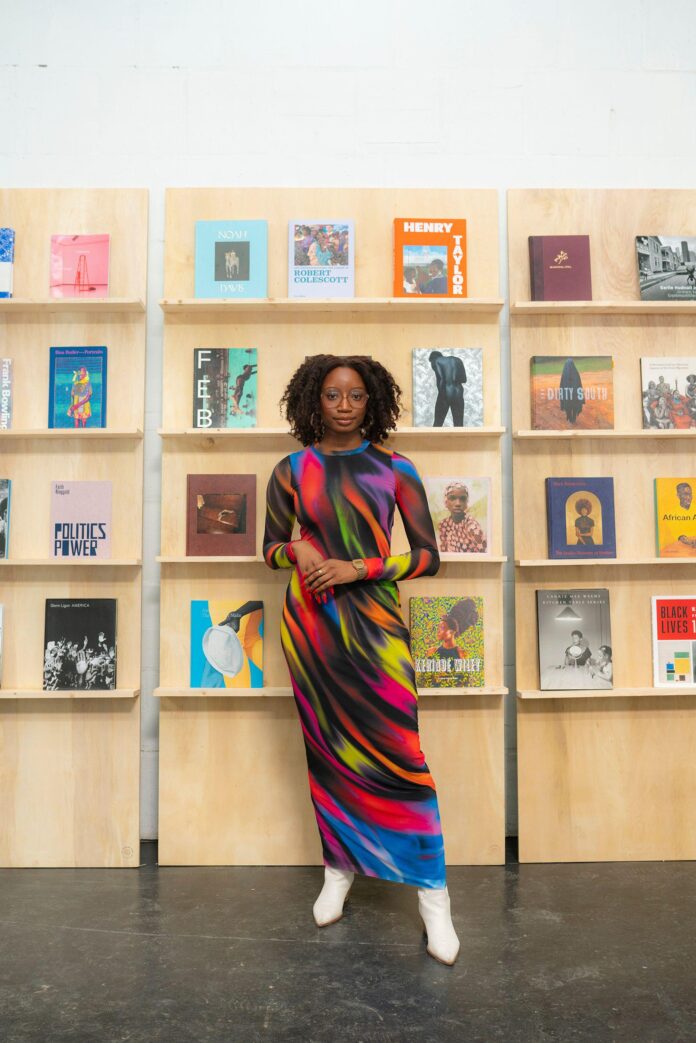A new research fellow at the Contemporary Arts Museum Houston (CAMH) is bringing her growing library of books about Black artists and art to the city’s .
Curator and archivist Amarie Cemone Gipson launched The Reading Room HTX as a stylish online reference featuring more than 300 titles on the last day of February, Black history month. Concurrently, CAMH was becoming more involved in a large-scale initiative to support Freedmen’s Town—a district in the city’s Fourth Ward that was built by formerly enslaved people—with documentation, infrastructural funding and arts programming that centres the existing community.
Freedmen’s Town was built by and for around 1,000 formerly enslaved people who laid their brick roads by hand in the mid-1860s. Artists-in-residence are imagining the community as it might look now if the City of Houston had protected the area and allowed it to flourish. The district includes seven sites listed as part of Unesco’s Routes of Enslaved Peoples project.
The Reading Room, a library filled with books by and about Black artists, with a focus on the South, collected by a Houston native, is now poised to open nearby. “If you want to understand American history, you have to understand the South,” Gipson says.

A previous physical manifestation of curator and archivist Amarie Cemone Gipson’s The Reading Room Courtesy Amarie Cemone Gipson
The Reading Room’s 900 sq. ft space will open to the public next week in the former Barbara Jordan Post Office, which was named for the Houston-born civil rights activist and first Black woman from the South elected to Congress. The modernist complex, now a retail, restaurant, event and co-working hub, is known simply as Post. Beginning with an event on 8 June, Freedmen’s Town residents will get transportation to special film screenings and priority access to programming at The Reading Room’s space in Post.
As lead research fellow, Gipson will be at the core of Rebirth in Action: Telling the Story of Freedom, a partnership between CAMH, Houston Freedmen’s Town Conservancy, the city of Houston and artist Theaster Gates, whose social practice work on the South Side of Chicago offers a guide for this endeavour. The Andrew W. Mellon Foundation gave $1.25m million to Rebirth in Action and named research fellows as part of the grant; the initiative also received support from the National Endowment for the Arts through its Our Town programme.
This first physical iteration of The Reading Room offers a crucial space for independent learning as Texas legislators pass bills to ban certain books from public school classrooms. Gipson hopes the library will attract like-minded archivists in the Freedmen’s Town community who have their own stories to tell. She will also have access to materials at the nearby African American Library, located in the building that housed the Gregory School, the first school for Black students in Houston.
“Freedmen’s Town has a very, very rich history, and has suffered from an unbelievable type of erasure,” Gipson says. “Using creativity and arts education to inspire people or make them aware of their history, it’s the best thing that you could possibly do.”

A screening of a documentary about Jean-Michel Basquiat during a previous iteration of curator and archivist Amarie Cemone Gipson’s The Reading Room Courtesy Amarie Cemone Gipson
While moving through the art world for a decade, Gipson felt the absence of something like The Reading Room. She was on the curatorial team at the Studio Museum in Harlem in 2019 when it was preparing for Dozie Kanu’s first museum solo show. The exhibition, Function, examined the intersections of art and design as they relate to the artist’s upbringing in Houston, where he was raised by Nigerian immigrant parents. Gipson recognised a conical rim at the base of one of Kanu’s sculptures as the kind put on customised cars known as “slabs” in Houston. A seat in faded purple reminded her of the drink Lean and the region’s rap verses referencing the cocktail of soda and cough syrup. As the only Southerner on the curatorial team, articulated these important references and touchstones in exhibition materials. Gipson was also instrumental in casting, staging and archiving the first performance to enter the Studio Museum’s permanent collection, a piece by Houston-born performance artist Autumn Knight.
Mich Stevenson, an artist and project manager at CAMH, and the museum’s deputy director, Seba Raquel Suber, see Gipson’s role as essential to the kind of cross-generational repair they hope to facilitate in Freedmen’s Town.
“We are excited to welcome social change makers like Amarie Gipson to this project,” Suber says. “Partnerships of this nature and community collaborations are new territory for CAMH, however crucial for museums to remain culturally relevant, impactful and position artists as a catalyst for social change.”

























